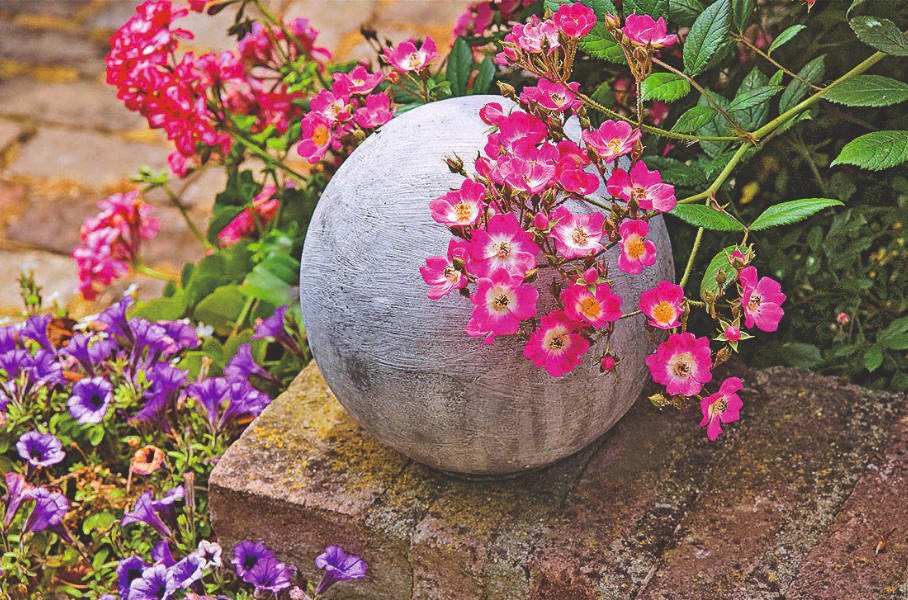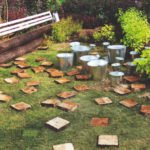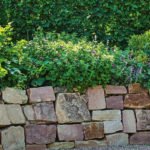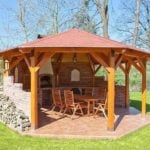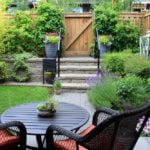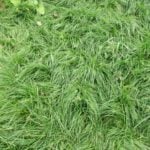The combination of flexibility and strength in the character of our hero earned him a reputation as a universal assistant in landscape design. Concrete can be used to create a variety of design elements of all shapes and sizes. And what shade of gray “suits” your garden?
Concrete is solid, strong, reliable and, for all its heaviness, ductile. As befits a gray cardinal, he is used to staying in the shade, giving the main place in the garden to the more popular characters-stone, clinker and wood.
For a long time, concrete was used exclusively as a link in the construction of walls and for the foundation, as the trendsetters of garden fashion considered its “appearance” boring and not worthy of attention. And they were completely wrong! Concrete is extremely pliable, it is easy to create any shape for the garden and home, such as letters. The Council: it is advisable to stick the wire in the still raw concrete, because later, in the process of drilling holes, you can break the product.
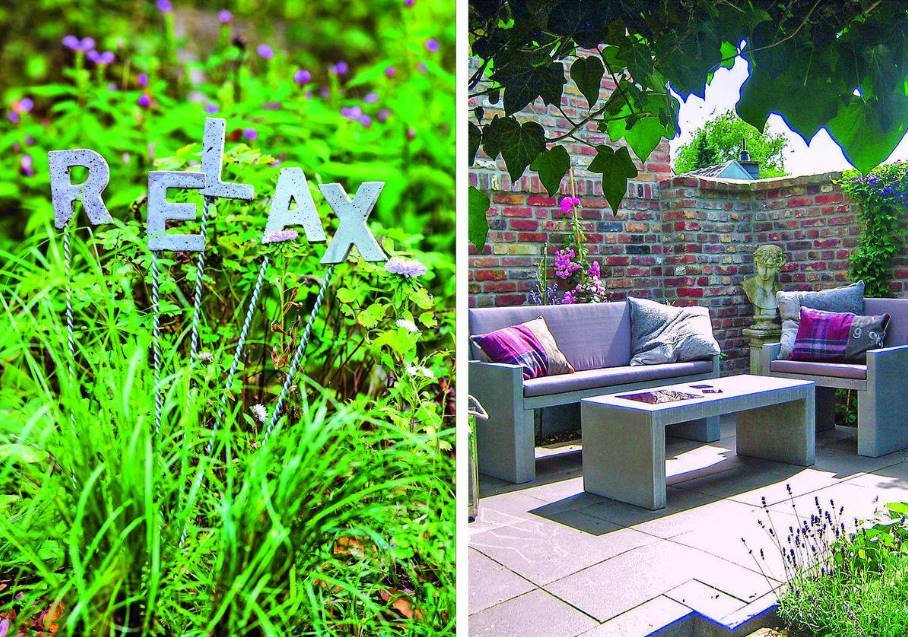
On the left: concrete letters. Right: concrete garden furniture.
Concrete furniture? Why not? After all, all you need to make it is a cement-sand mortar and a mold for pouring. For durability, benches, sofas and tables should be reinforced with metal mesh. Well, for convenience, it is enough to put soft pillows on the seat.
Now Mr.-in-the-gray-suit’s finest hour has finally struck: it was appreciated, allowing us to demonstrate the previously hidden aesthetic potential. Concrete art objects are an absolute trend! Moreover, landscape designers actively combine concrete structures with natural materials: the same stone and wood. For example, when laying paths, combine granite paving stones with concrete slabs, or when building partitions, combine elements of wood and concrete — “colorful” details effectively contrast with each other.
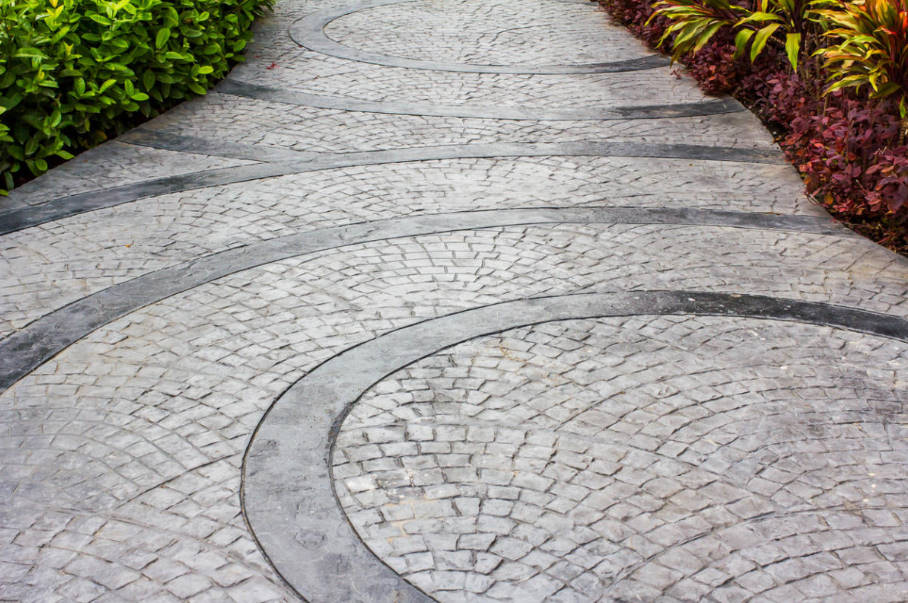
When creating paths, you can safely mix concrete and paving stones. And experiment with the drawing
Our hero is good in itself, because it can be painted in any color, give any shape and texture, and even create an aesthetic imitation of natural materials, almost identical to the originals. Concrete is an ideal option for the construction of retaining walls when terracing a garden on a slope or when strengthening the walls of a deep garden. The latest fashion – barely protruding above the surface of the water stepped slabs instead of the traditional bridge spanning the pond. However, it is better to entrust the implementation of such ambitious projects to professionals, because their construction requires special knowledge and skills.
Left: even a child can make such cute hearts out of concrete. Well, if you add a dye to the solution, the crafts will also become bright. Most importantly, do not forget to lubricate the mold for crafts from the inside with vegetable oil. Right: surrounded by bright colors, the rest is especially pleasant. The ensemble of the screen, raised flower beds, and bench was made of concrete and painted white. Such a structure can be built from bricks, and then from gypsum masonry.
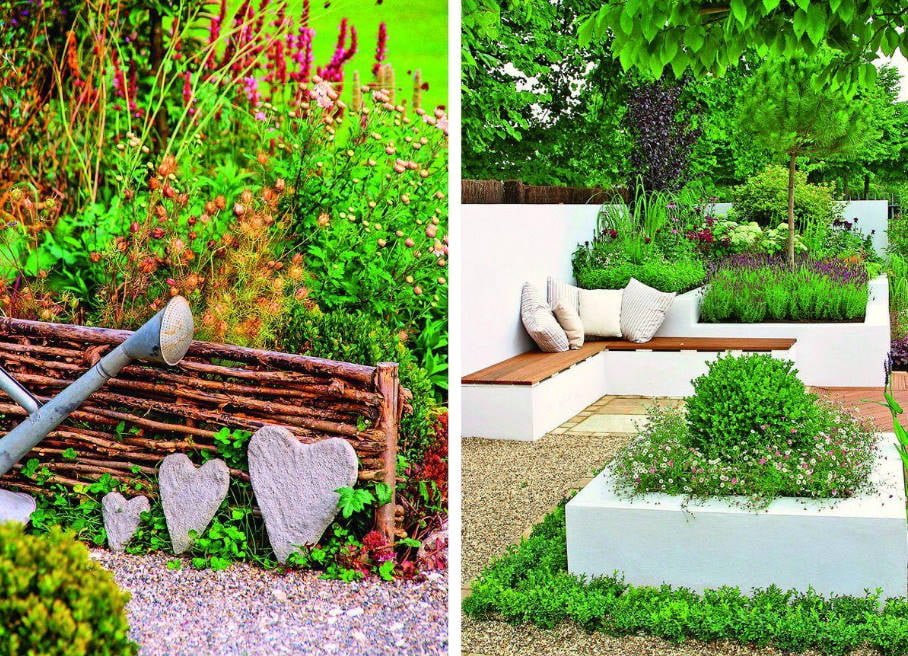
Left: concrete hearts. On the right: ensemble of screens, raised flower beds and benches
Another thing is the design of garden accessories or plant containers. Every gardener, even without much experience with the “gray assistant”, can give free rein to imagination and easily create a personal little masterpiece of cement, sand and water.
The same applies to paving terraces or paths with concrete slabs of our own production. Are you unsure of your abilities or are you just running out of time? This problem can be solved: you can buy ready-made concrete elements in the store. When designing your favorite garden concrete structures, experiment with the shape, shade, and texture. One way or another, the secrets of the gray cardinal will certainly be revealed to you!
The oldest building material
It is believed that concrete was invented by our contemporaries. In fact, it was widely used in the construction of the ancient Romans. Without it, the architects of those times simply could not have created such architectural masterpieces as, for example, the Pantheon in Rome with a domed vault, built in the I century AD.
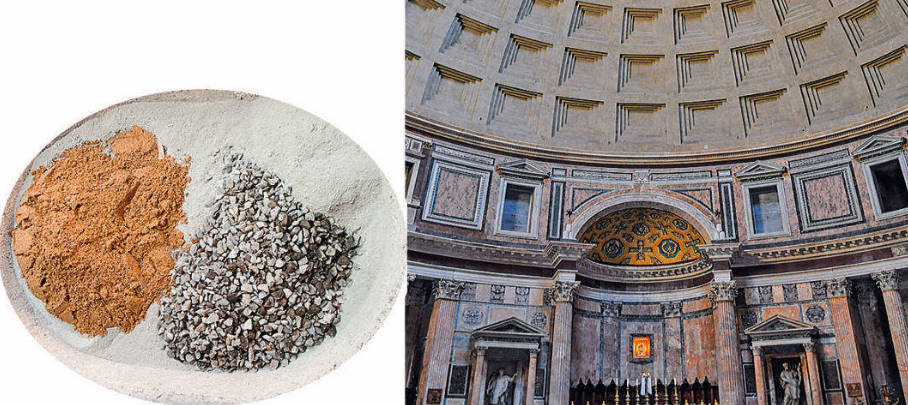
Concrete was used in construction by the ancient Romans
Opus caementicium is what the Romans called concrete, which then consisted of gravel, sand and lime, as well as volcanic tuff, which provides products with special strength due to its high hardness. The composition of modern concrete still includes sand and gravel of various fractions, as well as cement. The latter is made from lime and clay, sand from granulated blast furnace slag, fly ash and gypsum.
Master class: mobile flower box
Original concrete boxes-pots can be made with your own hands from cement-sand mortar.
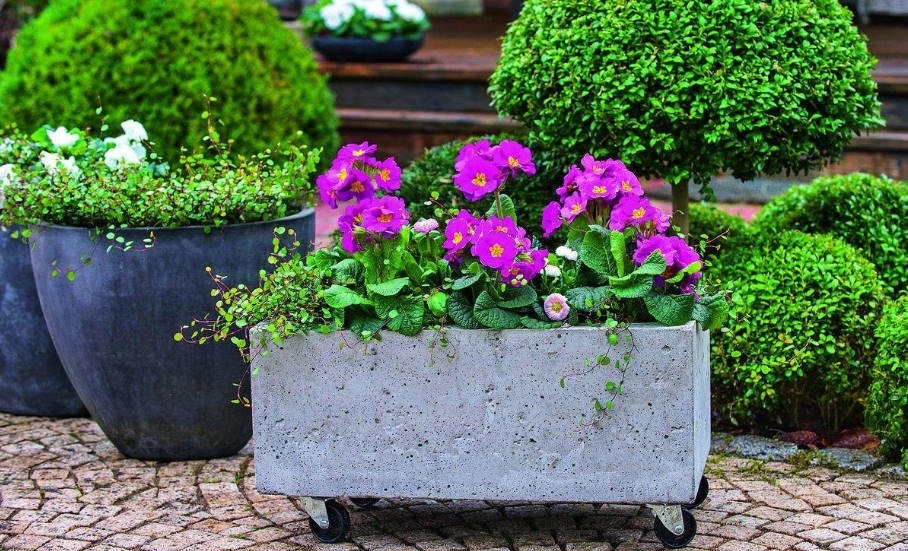
Mobile flower box
1. First, make a mold for future crafts – 2 waterproof boxes of different sizes. The outer frame should be larger (it is desirable to screw the walls to each other, and seal the seams with silicone), the inner one should be smaller, so that there is a gap of 4-5 cm (1.6-2 in) between the walls (this will be the thickness of the walls of the future concrete container) when it is sealed in the outer box. Then lubricate the inside of the outer box with sunflower oil and the outside of the inner box so that the concrete does not stick to the mold.
2. Next step: prepare a cement-sand mortar (the mass should resemble yogurt in consistency). Then place part of the solution in a large external container and smooth it with a spatula (the layer thickness is about 4-5 cm/1.6-2 in). To maintain the desired distance between the boxes, press 4 stoppers into the solution.
3. Put the inner box on top and put the stones in it. Now gradually fill the gaps between the walls of the boxes with the remaining solution.
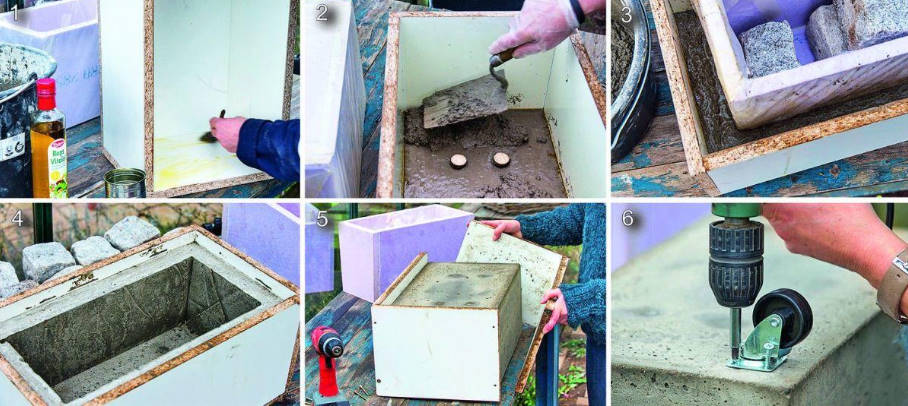
Master class
4. After about 3 days, carefully remove the inner box and leave your creation to dry further.
5. The concrete will completely harden in 2 weeks. Remove the outer frame by loosening the outer box walls.
6. Now, if desired, you can carefully screw the wheels to the bottom of the container. If you want to fasten the wheels, the plugs built into the bottom can’t be removed. If drainage holes are needed, they can simply be drilled into the traffic jams.
